As the autumn chill settles in, October brings forth a bounty of vegetables that not only add flavor to our meals but also pack a nutritious punch. This month, we focus on vegetables that are at their prime. Each of these offerings brings unique qualities and health benefits, making them great choices for any fall menu.
Artichokes

Artichokes are a fall delicacy that elevate any dining experience with their unique flavor profile and impressive nutritional benefits. Harvested primarily in coastal regions, these thistle-like buds are rich in antioxidants and fiber, making them an excellent choice for promoting digestive health. Their peak season during October means they are particularly tender and flavorful, perfect for grilling or steaming.
When preparing artichokes, consider a variety of cooking methods. Steaming is a common approach, allowing the leaves to soften while preserving their nutrient content. Pair them with a simple vinaigrette or a lemon butter sauce to enhance their natural earthy and slightly nutty taste. For a heartier dish, try stuffing them with breadcrumbs, herbs, and cheese before baking.
Artichokes are versatile; they can also be used in salads, pasta dishes, or as a flavorful addition to dips like creamy artichoke and spinach. Beyond their culinary uses, they are noted for their ability to protect liver health due to their high levels of cynarin, a compound that may help improve liver function. So, as October rolls in, don’t miss the chance to explore the many culinary possibilities that perfectly ripe artichokes can offer.
Beets

Vibrant and earthy, beets are a cornerstone of many October harvests. This root vegetable is not just visually stunning with its deep crimson exterior; it also boasts a wealth of health benefits. Rich in essential nutrients such as folate, manganese, potassium, and vitamin C, beets have been linked to improved cardiovascular health and enhanced athletic performance due to their high nitrate content. This property may help in reducing blood pressure and increasing blood flow, making beets a heart-friendly choice.
The crispness of beets makes them an excellent companion in various dishes. Roasting brings out their natural sweetness, creating a caramelized exterior that complements their earthy taste. You can cube them and toss them with a sprinkle of olive oil, salt, and pepper before roasting for a simple yet flavorful side dish. Try incorporating beets into salads—pair them with goat cheese and walnuts for a textural contrast and a boost in flavor.
Additionally, fresh beet greens, which are often overlooked, can be sautéed or added to smoothies for an extra nutrient boost, showcasing the versatility of this fabulous vegetable. In October, take advantage of the seasonal harvest of beets, adding a pop of color and health benefits to your autumn table.
Broccoli

Broccoli, a powerhouse cruciferous vegetable, becomes particularly abundant in October, making it an essential ingredient for fall recipes. Full of vitamins C and K, fiber, and a host of antioxidants, broccoli supports overall health and has been studied for its potential anti-cancer properties. The cooler weather of October helps to create a sweeter, more tender broccoli, enhancing its flavor and texture in various dishes.
Cooking broccoli can be as simple or as refined as you wish. For a quick and nutritious addition to meals, steaming or blanching broccoli preserves its bright green color and nutrients, making it an ideal side dish that can be accented with garlic and lemon for added zest. Alternatively, try roasting it for a caramelized, crispy edge that provides a fantastic contrast to its tender interior.
Broccoli can also shine as a key ingredient in hearty autumn soups, paired with flavors like cheddar or butternut squash. For a filling option, consider using it in casseroles or pasta dishes, where its flavor and texture provide balance and nutrition. As October showcases this vibrant green vegetable, its versatility allows for endless culinary explorations. Not only does broccoli thrive in cooler temperatures, but it also benefits from frost, which can enhance its sweetness. This makes October an ideal month to embrace broccoli in your kitchen, celebrating its flavors in seasonal favorites.
In addition to its culinary benefits, broccoli is also a nutritional marvel. Its sulfur-containing compounds, such as sulforaphane, have been studied for their potential ability to combat toxins and regulate inflammation in the body. Including this vegetable in your diet can be a delicious way to support your health as we transition into colder months.
Moreover, consider enjoying raw broccoli as part of a colorful vegetable platter, paired with dips like hummus or yogurt-based dressings. Its crunchy texture provides a satisfying snack that can easily be incorporated into lunchboxes or served at gatherings. On top of that, you can experiment with broccoli in various international cuisines, from stir-fries to curries, showcasing its versatility and ability to absorb flavors beautifully.
Brussels Sprouts
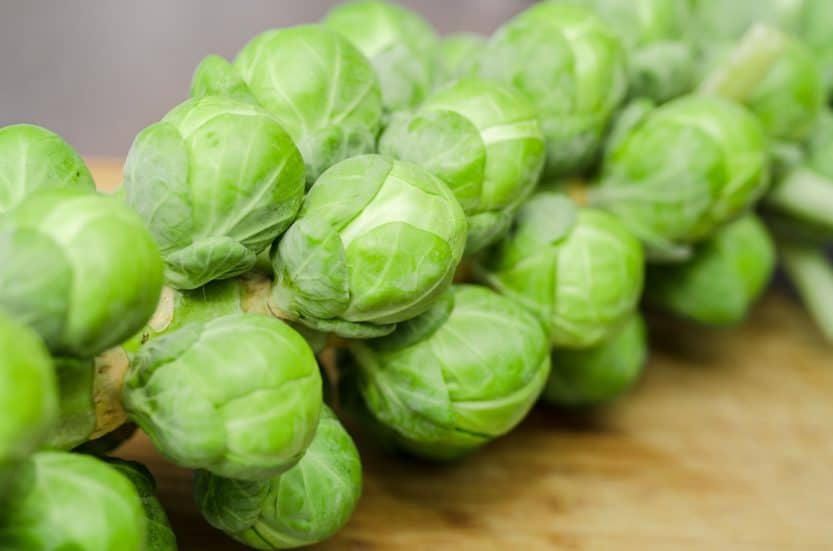
Brussels sprouts are a quintessential fall vegetable that truly comes into its own during October. With their compact, leafy buds, they are not only appealing to the eye but also packed with nutrients. Rich in vitamins K and C, as well as folate and fiber, Brussels sprouts contribute to a hearty diet that supports immune function and digestive health.
The colder weather of fall enhances the sweetness of Brussels sprouts, making them a delicious addition to a variety of dishes. They can be roasted, sautéed, or even grilled, allowing their natural flavors to shine through. Try tossing them with olive oil, balsamic vinegar, and a sprinkle of sea salt before roasting to achieve a crispy exterior while keeping the insides tender. The caramelization that occurs when roasting brings forth a depth of flavor that is simply irresistible.
For a contemporary twist, consider shredding raw Brussels sprouts for a crunchy salad base. Pair them with dried fruits, nuts, and a light vinaigrette for a refreshing and nutritious dish that balances the heartiness of autumn. This versatile vegetable is not just nutritious; it also serves as a canvas for various seasonings—think garlic, chili flakes, or even maple syrup for a sweet and savory delight.
Cabbage
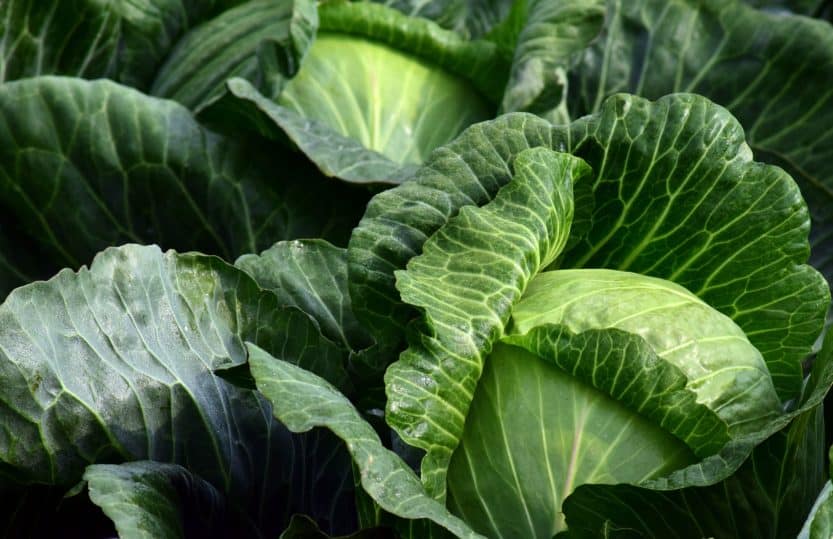
Cabbage is a humble yet robust vegetable that flourishes in October’s cooler climate, making it a staple in many kitchens this time of year. Available in various varieties—green, red, and Savoy—cabbage is prized for its versatility and long shelf life. It is a cruciferous vegetable rich in vitamin K, vitamin C, and dietary fiber, providing essential nutrients that support bone health, immune function, and gut health.
The ways to prepare cabbage are virtually endless. Traditional coleslaw is a common application, but don’t overlook its potential in hearty soups and stews. Cabbage can take on great flavor as it simmers, making it a perfect addition to dishes like chicken soup or vegetable broth. When sautéed, it develops a sweetness that complements many proteins, granting balance and depth to your meals.
Fermentation is another fantastic way to utilize cabbage. By preparing homemade sauerkraut or kimchi, you not only create delicious condiments but also introduce probiotics that enhance gut health. The process of fermentation boosts the cabbage’s nutritional profile and transforms its flavor into a tangy delight. Whether enjoying fresh, cooked, or fermented, cabbage serves as a versatile vegetable that is especially rewarding during the autumn months.
Carrots
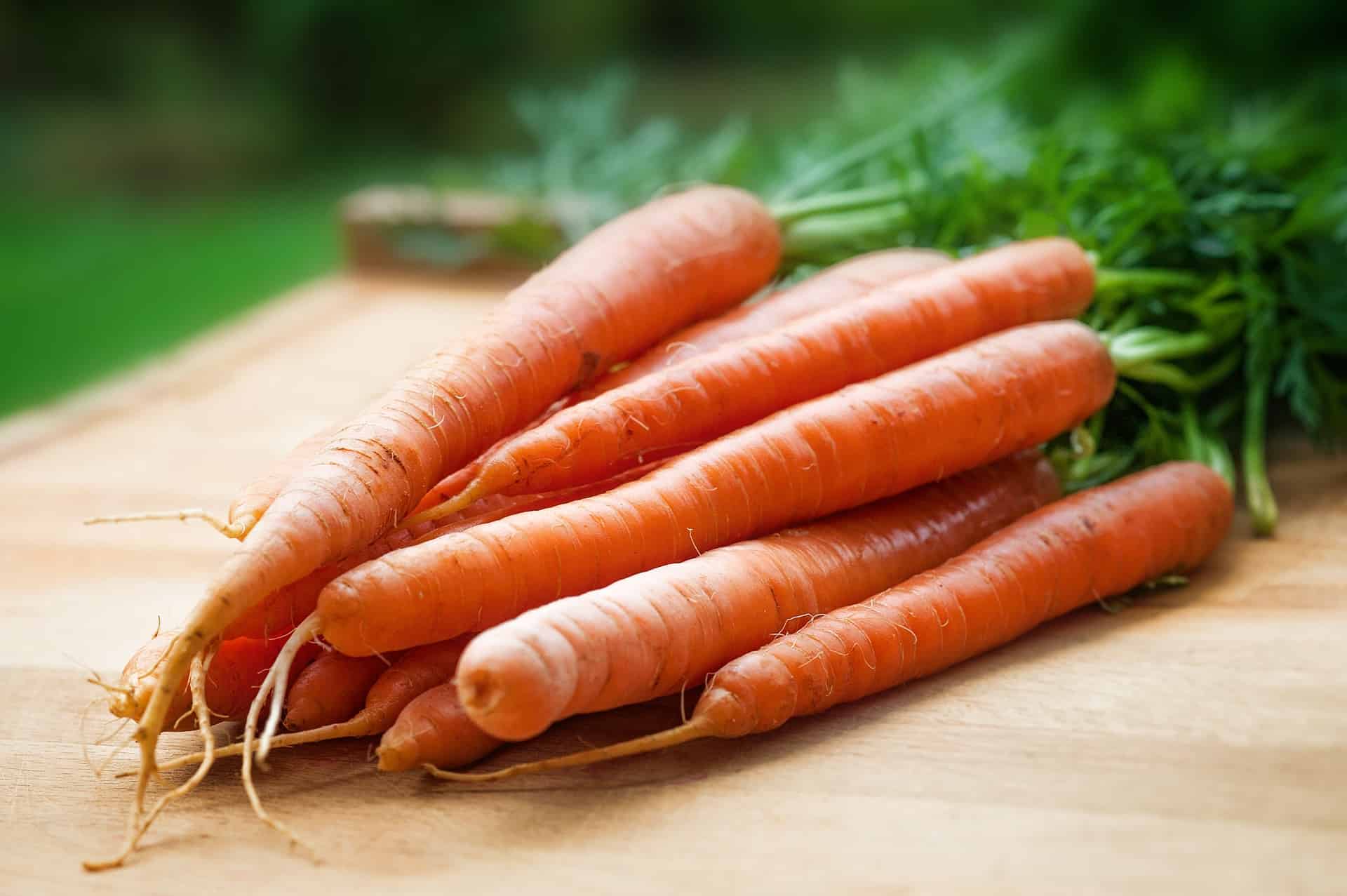
Bursting with color and flavor, carrots are a beloved root vegetable that reaches its peak in October, showcasing extraordinary sweetness as they mature through the summer. Available in a rainbow of hues, from traditional orange to vibrant purple and yellow, carrots contribute not only aesthetic appeal to dishes but also an abundance of beta-carotene, which our bodies convert into vitamin A, essential for maintaining healthy vision and skin.
Carrots are highly versatile and can be prepared in myriad ways. Roasting brings out their natural sugars, creating a caramelization that enhances their flavor profile—simply toss them in
continue
olive oil, honey, and a sprinkle of thyme before roasting to create a warming side dish that pairs beautifully with autumn meats or even stands alone as a delightful vegetarian option. You can also steam or blanch them to preserve their bright color and crisp texture, making for an excellent addition to salads or grain bowls.
For a comforting and nutritious option, consider blending carrots into creamy soups. A classic carrot ginger soup can be a perfect starter, striking an exquisite balance between the earthiness of the carrots and the zing of fresh ginger. This combo not only warms the body during chilly October evenings but also excites the palate with its vibrant flavors.
Don’t forget about raw carrots, which are an easy, nutritious snack that can brighten up your lunchbox or party platter. Pair them with hummus, tzatziki, or a spicy dip to enhance their crunchy sweetness. For a fun twist, try pickling carrots with spices such as coriander and mustard seeds to create a zesty accompaniment for sandwiches or salads.
Lastly, utilizing the greens from your carrots can add a delightful peppery flavor to your dishes. The tops can be blended into pesto, chopped and added to salads, or sautéed as a flavorful side. Embracing the entire carrot plant not only minimizes waste but also introduces exciting new flavors into your cooking.
Cauliflower
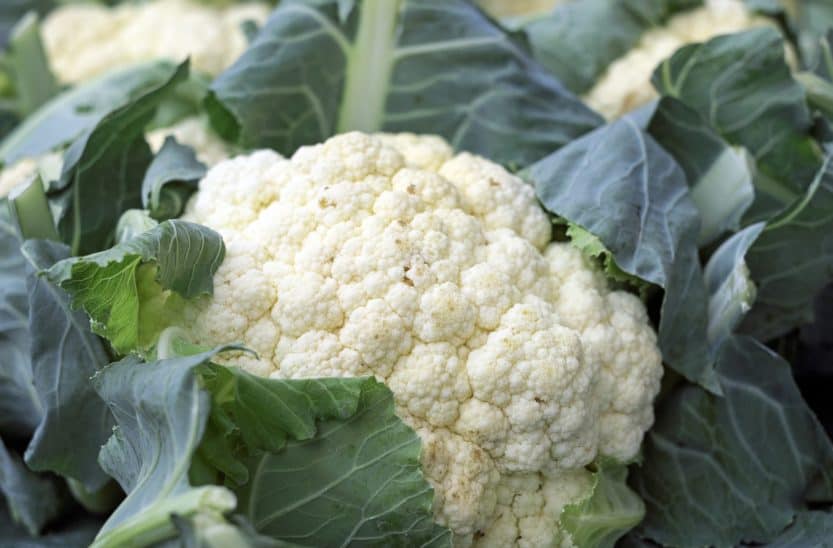
Cauliflower has emerged as a culinary darling in recent years, owing to its versatility and ability to adapt to various cooking methods while absorbing flavors beautifully. In October, this cool-weather crop reaches its peak, compelling home cooks and professional chefs alike to include it in their seasonal recipes.
One of the most intriguing aspects of cauliflower is its low carbohydrate content, making it an excellent alternative to grains and legumes for those looking to cut back on carbs or increase their vegetable intake. Try using cauliflower rice as a base for stir-fries or grain bowls—simply pulse raw cauliflower florets in a food processor and sauté them for a light, nutritious alternative.
Beyond the traditional white variety, October also ushers in colorful options like purple and orange cauliflower, which are equally nutritious and visually striking. These varieties make an eye-catching addition to fall salads or roasted vegetable medleys. When roasted, cauliflower can develop a golden crust that enhances its natural sweetness, which can easily be paired with spices like cumin, paprika, or even topped with a tangy tahini dressing.
Cauliflower lends itself well to creativity, becoming the main ingredient in uniquely trendy dishes such as cauliflower pizza crust, cauliflower buffalo wings, or creamy cauliflower soup. These options provide delectable ways to savor this vegetable’s adaptability in both comforting and innovative forms.
Celery

Often overlooked, celery deserves a moment in the spotlight during October. This crisp, refreshing vegetable is often associated with snacks and salads, but it also plays a crucial role in the flavors of many autumn dishes. Celery thrives in cool weather, which enhances its crunch and flavor profile, making it a great addition to soups, stews, and more complex culinary creations.
Celery is celebrated for its high water content and low calories, making it not only refreshing but also an excellent source of hydration, particularly as the air turns dry in the fall. It contains essential nutrients such as vitamin K, potassium, and fiber, providing numerous health benefits, including supporting digestive health and maintaining healthy blood pressure levels.
This vegetable serves as the foundation for aromatic dishes; it is one of the holy trinity of mirepoix, alongside onions and carrots, which forms the base of countless soups, sauces, and stocks. By incorporating finely chopped celery into your fall recipes, you introduce a mild, earthy flavor that enhances the overall dish.
Experiment with roasted celery alongside other root vegetables, or braise it with herbs like thyme and bay leaves for a delightful side that elevates its natural flavors. Additionally, celery can shine in slaws, paired with apples and walnuts for a refreshing autumn dish that balances crispness and sweetness.
Corn

October is the month when the corn harvest reaches its zenith, providing one of fall’s quintessential flavors. While many associate corn with summer grilling, fresh corn can still be found in markets and farms during October, reminding us to savor these golden kernels while they’re in season. Corn is not just a vegetable; it is used in diverse culinary applications, from salads to soups and even baked goods.
Fresh corn is packed with nutrients, including fiber, B vitamins, and antioxidants, making it a nourishing component of various dishes. It tastes best when harvested during its peak season, where the kernels are plump and sweet. One classic preparation is to enjoy corn on the cob, which can be boiled or grilled and slathered with butter and a sprinkle of salt for a simple yet delightful snack.
Incorporate corn into seasonal chowders to warm up on chilly evenings, blending it with potatoes, leeks, and fresh herbs for a hearty soup. Additionally, consider adding fresh corn kernels to salads, mixing them with ingredients like tomatoes, avocado, and lime for a vibrant side dish that celebrates the essence of autumn.
Don’t overlook the versatility of cornmeal—using it in cornbread or polenta provides a comforting addition to your meals. Furthermore, even as the month progresses and fresh corn becomes less abundant, you can embrace other forms of corn, such as frozen or canned, preserving its vibrant flavor for use in soups, casseroles, and sautés throughout the colder months.
Cucumbers
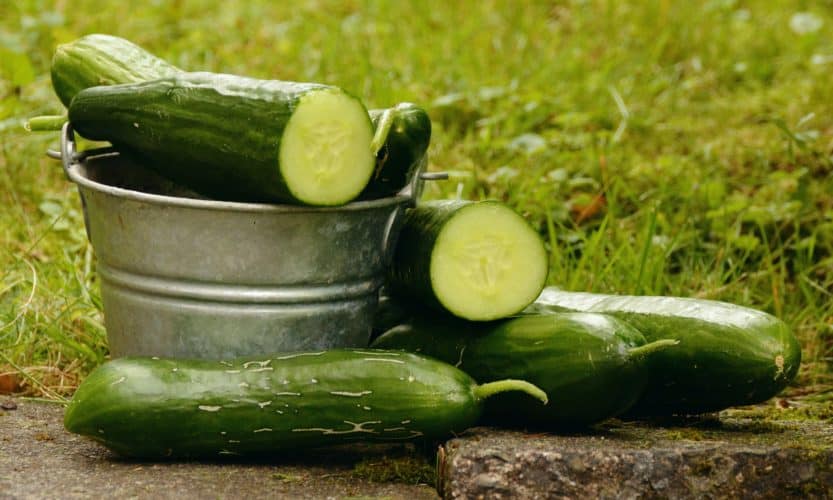
While cucumbers are often thought of as a summer vegetable, certain varieties, particularly pickling cucumbers, continue to thrive into October. Known for their refreshing crunch and high water content, cucumbers are a delightful addition to autumn dishes, especially when incorporated into salads, sandwiches, or served as a snack.
One of the most exciting ways to enjoy cucumbers this time of year is by pickling them. Quick pickles can easily be made at home by slicing cucumbers and soaking them in a solution of vinegar, sugar, and spices. This not only preserves their freshness but also adds a tangy twist that complements a variety of meals. You can use pickled cucumbers as a condiment for burgers and sandwiches or as a tasty topping for tacos.
Though traditional cucumber salads often highlight their cooling qualities, consider roasting them this October to explore new flavor profiles. When roasted with olive oil, salt, and perhaps a touch of garlic, cucumbers develop a surprising sweetness that can serve as a unique side dish or a component in grain bowls. For a refreshing fusion dish, try incorporating cucumbers with warm grains like quinoa or farro, complemented with herbs, lemon, and feta.
Eggplant
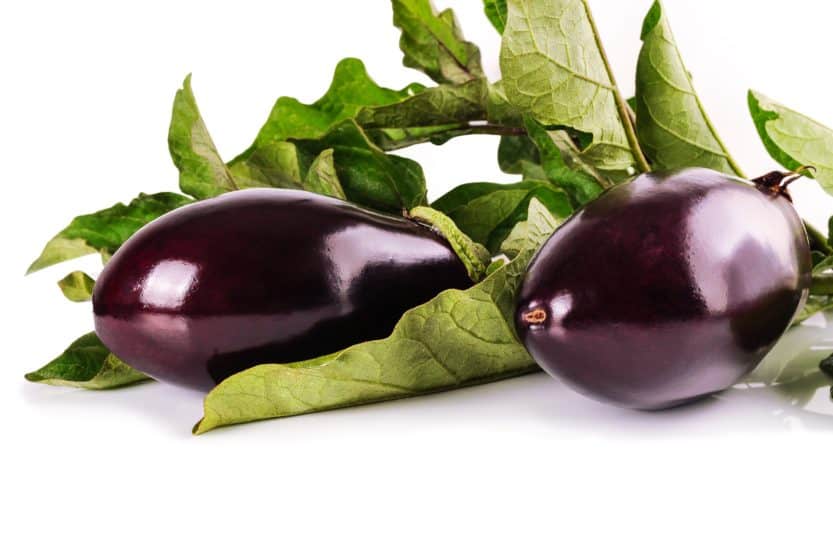
October signals the tail end of eggplant season, making it a wonderful time to indulge in this versatile nightshade. With its velvety texture and subtly savory flavor, eggplant can be prepared in numerous ways that highlight its culinary potential. From grilling to baking, eggplant absorbs flavors beautifully and easily transforms into a star ingredient in vegetarian dishes.
One of the most delightful autumnal preparations is eggplant parmesan, which showcases the vegetable’s ability to carry rich tomato sauce and cheesy goodness perfect for cozy gatherings. Alternatively, you can slice eggplant into rounds, coat them in olive oil and seasoning, and roast them until tender for a savory addition to any pasta dish.
For a rustic and hearty option, try making baba ganoush by roasting whole eggplants until charred and smoky, then blending them with tahini, lemon juice, and garlic. This dip pairs well with warm pita bread or fresh vegetables, making it an excellent appetizer for fall gatherings.
Eggplant is also widely used in Mediterranean and Middle Eastern dishes. It can be found in classic recipes like moussaka or ratatouille, where its robust flavor takes center stage alongside other seasonal vegetables. As eggplant is harvested, this is an excellent time to explore different cuisines and how they celebrate this versatile vegetable.
Green Beans
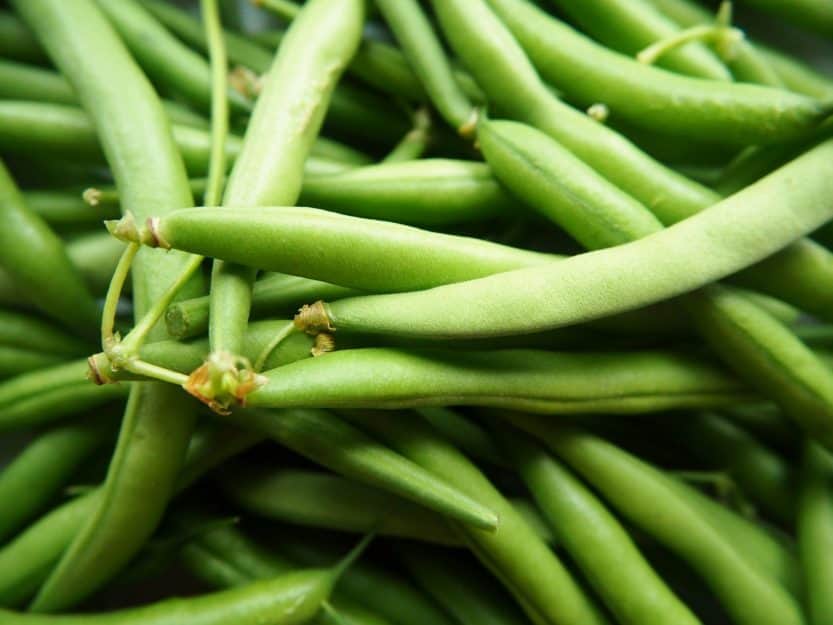
Green beans are a fall staple that showcases their versatility and vibrant color on the plate. While they may not be as frequently highlighted as other vegetables, these crisp, tender pods offer numerous nutritional benefits, including vitamins A, C, and K, along with dietary fiber, making them a healthful addition to any meal.
In October, you can find fresh green beans in farmers’ markets, where they can be enjoyed in their prime. One classic way to prepare green beans is by blanching them for a few minutes to retain their bright green color and crunchy texture. Toss them with olive oil, garlic, and perhaps a sprinkle of lemon zest for a refreshing side dish that pairs well with a variety of proteins.
Another fabulous approach is to incorporate green beans into hearty autumn salads, mixing them with roasted squash, nuts, and a tangy vinaigrette. This vibrant combination not only celebrates the flavors of the season but also introduces a satisfying crunch to your dishes.
For a comforting option, try green bean casseroles, a perennial favorite at holiday gatherings. By sautéing green beans with mushrooms and cream, and then topping them with crispy fried onions, you create a lush and crowd-pleasing side dish that highlights this vegetable’s adaptability.
Green beans can also be sautéed with bacon or pancetta for added depth of flavor, or used as a base for a stir-fry, where their crispness complements myriad ingredients. Embrace the bountiful harvest of green beans this October and ensure these versatile vegetables take any meal to the next level.
Kale

Kale has taken the culinary world by storm, earning its reputation as a superfood and mainstay in health-conscious diets. In October, it reaches its peak, boasting a robust flavor and a nutrient profile that is hard to match. Not only is kale rich in vitamins A, C, and K, but it also contains antioxidants and anti-inflammatory properties, contributing to overall health.
With its hearty texture, kale lends itself to various cooking methods. One of the most popular ways to enjoy kale is in salads, where it can be massaged with a dressing made from olive oil, lemon juice, and perhaps some grated cheese to soften its leaves and enhance its flavor. For a seasonal twist, try adding roasted butternut squash, dried cranberries, and toasted pumpkin seeds for a delicious autumn salad bursting with color and nutrition.
Kale is also an excellent addition to soups and stews, where it provides a satisfying chew and absorbs the flavors of your broth. A classic minestrone soup can be elevated by adding chopped kale, transforming it into a nutritious meal that warms you from the inside out.
Additionally, consider using kale as a base for sandwiches or wraps, pairing it with proteins like turkey or hummus for a wholesome lunch option. If you’re looking for innovative snacks, kale chips baked with spices offer a crunchy alternative to traditional chips and are simple to make at home. As you explore October’s offerings, let the versatility of kale inspire your culinary creativity.
Leeks
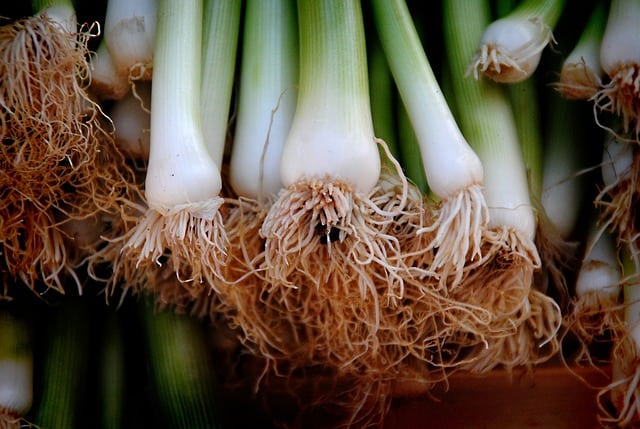
Leeks, with their mild onion flavor and tender texture, are a hidden gem in October’s vegetable repertoire. This allium variety flourishes in cooler temperatures, developing a sweetness that enhances savory dishes. Rich in vitamins A, C, and K, as well as fiber, leeks offer both flavor and nutrition.
One classic preparation method for leeks is to gently sauté them until they become tender and aromatic. This depth of flavor serves as a fantastic base for risottos, soups, or sauces. A potato leek soup, soft and creamy, is a quintessential fall dish that celebrates this vegetable’s subtle sweetness; blending the two creates a comforting bowl that is perfect for chilly evenings.
Leeks also shine in quiches or savory tarts, where their flavor complements eggs and cheeses beautifully. Try caramelizing leeks and using them as a topping on pizzas or flatbreads, providing a sweet and savory element that contrasts wonderfully with tangy cheeses.
For a simple, elegant side, consider preparing leeks en papillote. Wrap sliced leeks with herbs, a touch of butter, and a splash of white wine in parchment paper, then bake until tender. This technique allows the leeks to steam gently, resulting in a delectable dish that highlights their natural flavors.
Okra

October marks a transition for okra, a vegetable that thrives in warmer weather but can still be harvested into the cooler months in certain regions. With its unique texture and taste, okra adds a distinct element to both traditional and contemporary dishes. Known for its high fiber content, vitamins C and K, and omega-3 fatty acids, okra is a nutritious addition to your fall meals.
One of the most beloved ways to enjoy okra is by incorporating it into gumbo, a traditional Southern dish that showcases this vegetable’s ability to thicken and enrich the stew. Its slightly grassy flavor balances beautifully with spiced meats and other vegetables, making it a perfect hearty option for autumn gatherings.
For those not inclined to the heat of gumbo, try frying or roasting okra for a crispy side dish. When fried, fresh slices of okra develop a delightful crunch and pair wonderfully with dipping sauces. Alternatively, roasting okra drizzled with olive oil and seasoned to taste creates a flavorful, nutritious snack or appetizer that celebrates the season.
You can also experiment with okra in salads, where its unique shape and crunch can add intrigue. Sautéing it with garlic and onions can create a delightful side that pairs well with rice or grains—adding body and fiber to nutritious bowls.
Parsnips
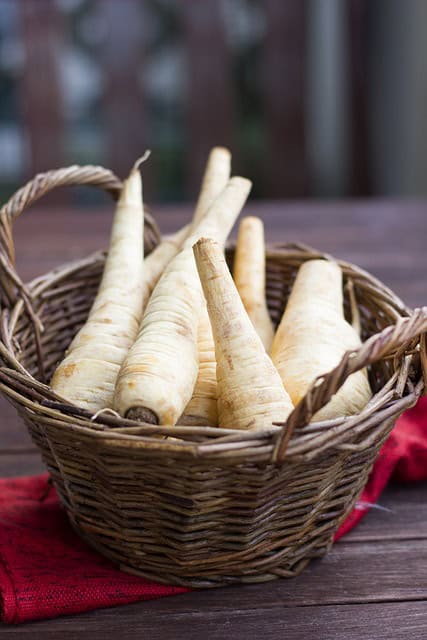
Parsnips are often an underappreciated root vegetable but are truly worth celebrating in October. As the weather turns colder, parsnips develop an even sweeter flavor, enhancing their appeal in various recipes. Their creamy, starchy texture makes them a fantastic substitute for potatoes, providing a unique alternative that can elevate traditional dishes.
One classic way to savor parsnips is by roasting them. Toss parsnip sticks in olive oil, salt, and herbs like thyme or rosemary, then roast until they’re tender and caramelized—this method locks in their natural sweetness and creates a delightful depth of flavor. Roasted parsnips can be served as a side dish or blended into a creamy purée, perfect as a base for proteins.
Pureed parsnips also shine in soups, where their naturally sweet flavor can be enhanced with spices like nutmeg or ginger. For a warm and comforting autumn dish, consider a parsnip and apple soup, combining the earthiness of parsnips with the sweetness of apples, creating a harmonious balance that embodies the fall season.
Parsnips can also be incorporated into gratins or casseroles, layered with cheese and cream, to create a luxurious side dish that will impress at any gathering. Their versatility allows home cooks to incorporate them into a wide range of dishes, making parsnips a worthwhile addition to your October vegetable repertoire.
Peppers
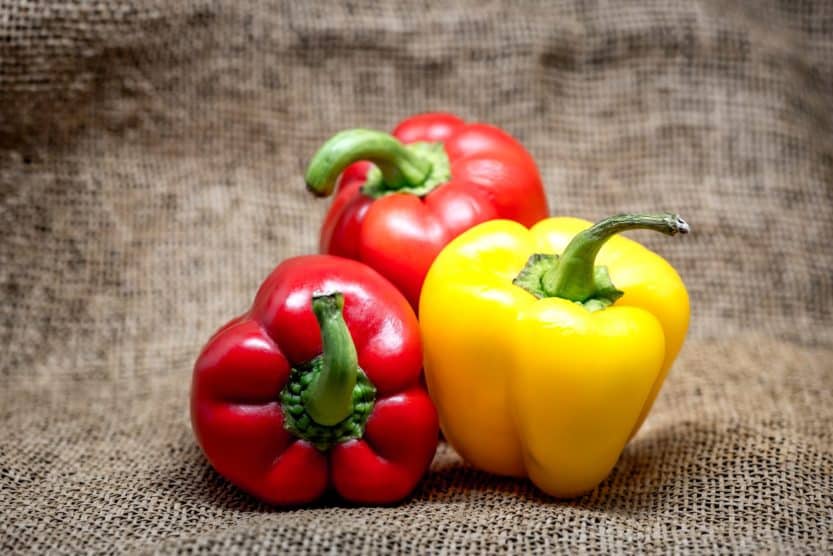
October marks a transition for peppers, with both sweet and spicy varieties peaking during this time. Whether you enjoy the gentle sweetness of bell peppers or the heat of jalapeños and serranos, these colorful vegetables are essential to autumn cooking, offering freshness and a pop of color that brightens up our seasonal dishes.
One popular autumnal preparation is to roast peppers, which enhances their natural sweetness and adds a smoky flavor. Roasted peppers can be used in various dishes, from sauces to salads, or as a topping for sandwiches. Incorporate roasted peppers into a warm grain bowl for a vibrant and nutritious meal, pairing them with quinoa, feta cheese, and a zesty lemon dressing.
Stuffed peppers are another fantastic way to showcase the versatility of these vegetables. Fill halved bell peppers with a mixture of grains, beans, and spices, and bake until tender for a satisfying main dish. They can also serve as a colorful side to meats or as a vegetarian option, allowing for countless variations depending on your flavor preferences.
For those who prefer heat, jalapeños can be incorporated into salsas, adding a fiery kick to tacos or grilled dishes. They can also be pickled to create zesty toppings that elevate everything from sandwiches to salads. Additionally, consider integrating peppers into stir-fries, where their crunch and color can complement an array of proteins and other vegetables.
Incorporating peppers into your meals during October not only enhances flavor but also adds a wealth of vitamins and antioxidants. From bell peppers to hot varieties, their versatility can enrich your kitchen creations throughout the autumn season.
Pumpkins

Pumpkins are the quintessential symbol of fall, embodying the warmth and nostalgia of the season. Beyond their role in decorations and Thanksgiving pies, pumpkins are highly nutritious, packed with vitamins A, C, and E, as well as potassium and fiber. This versatility makes them an excellent ingredient for both savory and sweet dishes alike.
One popular way to incorporate pumpkins into your meals is by creating a savory pumpkin soup. By roasting the pumpkin and blending it with onions, garlic, and vegetable broth, you can create a silky, comforting soup perfect for chilly evenings. Spice it up with a hint of nutmeg and finish with a drizzle of cream or coconut milk for added richness.
Pumpkin can also be roasted and used in salads, paired with ingredients like feta, arugula, and walnuts for a mouthwatering blend of flavors. For a heartier option, substitute pumpkin puree in risottos or pasta dishes, adding a creamy texture and a sweet depth that marries beautifully with sage and garlic.
Moreover, don’t overlook the use of pumpkin seeds (pepitas), which are highly nutritious and can be toasted for a crunchy snack or sprinkled on salads and soups for added texture. They pack a healthy dose of magnesium, iron, and zinc, enhancing the nutritional value of your meals.
Lastly, if you’re feeling adventurous, consider using pumpkin in your baked goods. Pumpkin bread, muffins, or pancakes can incorporate the delicious flavor of fall in a sweet treat that’s perfect for breakfast or dessert.
Shallots

Shallots are a culinary gem that shine brightly in October. While they may be lesser-known compared to onions, shallots bring a sweeter, milder flavor profile, making them an invaluable ingredient in many dishes. Rich in antioxidants and vitamins, including B vitamins and potassium, shallots not only enhance taste but also contribute to a healthy diet.
These versatile alliums can be used in a multitude of ways. Finely chopped shallots can be sautéed with butter or olive oil at the start of a dish to create aromatic bases for sauces, soups, or braises. Their subtle sweetness mellows when cooked, making them an excellent complement to roasted vegetables or hearty casseroles.
Shallots can also be caramelized, resulting in a rich, sweet topping perfect for pizzas, burgers, or bruschetta. Adding caramelized shallots to a quiche or savory tart enriches both the flavor and complexity of the dish, allowing their sweetness to shine through alongside cheeses and greens.
For a refreshing touch, slice shallots thinly and marinate them in vinegar to make a quick pickled shallot. This method not only adds a delightful tang to salads and tacos but also elevates meats and fish, making them perfect accompaniments for autumn dishes.
Including shallots in your October cooking opens a world of flavor possibilities, allowing you to experiment with various cuisines, from French to Mediterranean.
Spinach
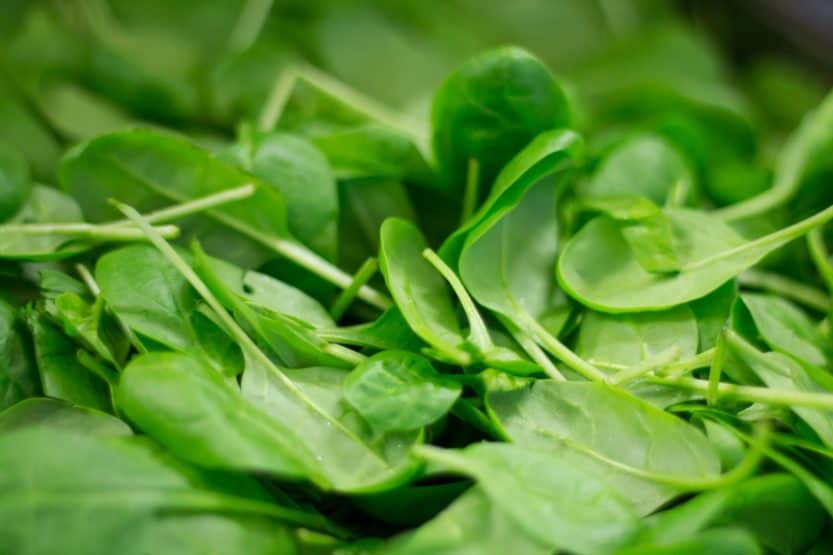
Spinach is another powerhouse vegetable that thrives in the cooler months, making its vibrant green leaves a welcome addition to your October table. Known for its high nutrient content, including iron, vitamins A, C, and K, spinach is an excellent choice for boosting nutrition and flavor in a range of dishes.
One of the simplest yet most delightful ways to enjoy spinach is to sauté it with garlic and olive oil, creating a quick side dish that retains its vibrant color and health benefits. This preparation can also serve as a base for sautéed mushrooms, chickpeas, or even a poached egg, providing a nutritious and satisfying meal.
Incorporating spinach into soups and stews is an excellent way to add a boost of greens. It wilts quickly and retains its flavor, making it a perfect addition to minestrone or vegetable soups. For a delicious and hearty fall dish, consider adding spinach to a creamy potato soup, enriching both the flavor and nutritional profile.
Spinach is also a fantastic ingredient in salads, bringing color and a tender texture to your dishes. Pair it with roasted beets, goat cheese, and walnuts for a delightful autumn salad that explodes with flavor and nutrition. Adding grains like quinoa or farro can turn it into a fulfilling entrée.
For those who love to bake, spinach can be nestled inside pastries and quiches, blending beautifully with cheese and spices for a delightful brunch dish. The adaptability of spinach knows no bounds, making it a must-have ingredient for any October menu.
Sweet Potatoes
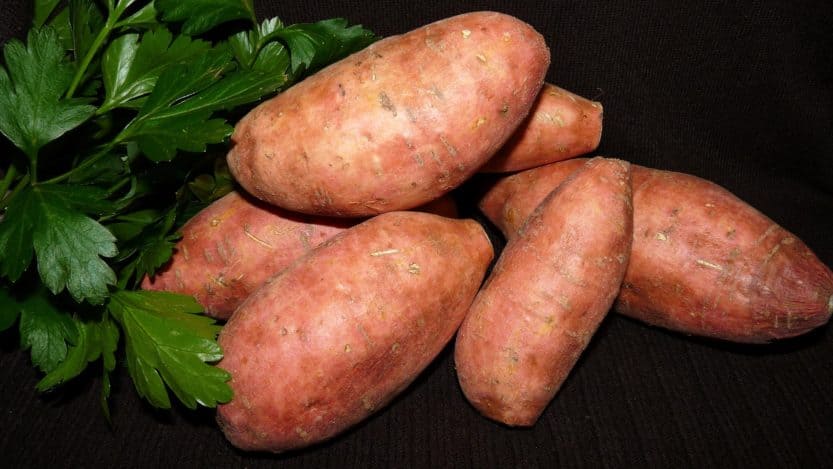
Sweet potatoes are a true autumn staple, known for their vibrant orange hue and natural sweetness. Packed with vitamins A and C, fiber, and antioxidants, they are not only delicious but also provide significant health benefits. Their versatility makes them a favorite among home cooks, allowing them to shine in a variety of dishes, from sides to desserts.
One of the most popular methods to enjoy sweet potatoes is by roasting them. This technique enhances their natural sugars, resulting in a delightful caramelization. Tossed with a bit of olive oil, salt, and pepper, they make a perfect side dish to accompany roasted meats or hearty grain bowls. For a flavorful twist, consider adding spices such as cinnamon or cayenne pepper to the mix, providing a warming note ideal for fall.
Sweet potatoes can also be mashed, which creates a creamy and comforting side dish that pairs wonderfully with a variety of proteins. Mixing in elements like garlic, sour cream, or herbs can elevate the flavor profile, making it a great addition to your Thanksgiving table or any autumn gathering.
In addition to savory recipes, sweet potatoes can be transformed into delicious desserts. Sweet potato pie, for example, is a beloved fall classic, offering a rich and spiced filling that perfectly captures the essence of the season. Muffins and pancakes made with sweet potato puree can also provide a wholesome start to your day, enriched with flavor and nutrition.
Don’t forget about sweet potato fries—seasoned and baked or fried until crispy, they are an irresistible snack or side dish that adds a touch of indulgence while still being packed with nutrients.
Turnips
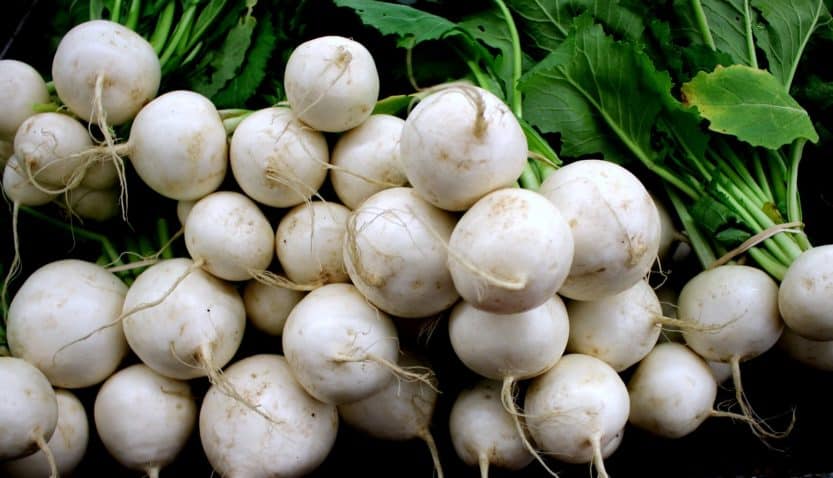
Turnips, with their distinct flavor and crisp texture, are another underrated vegetable that shines in October. Often overlooked in favor of their more popular counterparts, turnips are incredibly versatile and can be enjoyed in various culinary applications. They are rich in vitamins C and K, folate, and dietary fiber, making them a healthy addition to your diet.
One of the best ways to showcase the flavor of turnips is through roasting. Much like sweet potatoes, roasting turnips brings out their natural sweetness and enhances their earthy flavor. Cut them into cubes, toss with olive oil and your choice of herbs, and roast until tender for a delightful side dish that can accompany meats or be tossed into salads.
Turnips can also be mashed as a low-carb alternative to mashed potatoes. Combining them with garlic and a splash of cream or butter creates a smooth and flavorful side dish that complements other autumnal flavors. Additionally, blending turnips with potatoes in a mash can add complexity and depth to the dish.
For a heartier option, consider using turnips in stews and casseroles, where their ability to absorb flavors enhances the overall dish. They can be sliced thin and layered in a gratin with cheese or cream for a rich, comforting dish that is perfect for chilly nights.
In salads, raw turnips add a crunchy texture and a mild peppery taste. Julienne or shred them for a refreshing slaw, combining with apples and a tangy dressing to create a bright, seasonal side that contrasts beautifully with richer autumnal flavors.
Moreover, turnip greens—often overlooked—are also edible and nutritious. Sautéed with garlic and olive oil, they make for a healthy and flavorful addition, showcasing the versatility of this root vegetable.
Watercress

Watercress is a vibrant leafy green that often gets overshadowed by other greens, but it plays a pivotal role in the autumn harvest. Known for its distinctive peppery flavor, watercress is a member of the cruciferous vegetable family, packing an impressive array of vitamins and minerals, including vitamins A, C, and K, as well as calcium and iron. Its sharp taste can elevate salads, soups, and sandwiches, making it a versatile ingredient in the kitchen.
One of the simplest and most effective ways to enjoy watercress is in fresh salads. Pairing it with sweeter ingredients like pears or apples enhances its peppery notes while balancing the flavors. Toss watercress with nuts for crunch—walnuts or pecans work beautifully—and add a citrus vinaigrette for a bright, refreshing side dish that complements fall meals.
Watercress can also shine in soups, where its flavor can infuse the broth. Consider making a creamy watercress soup, blending it with potatoes and onions for a silky texture. This dish can be served hot or cold, providing a refreshing option as the weather transitions. Garnish with a drizzle of crème fraîche and some toasted bread croutons to add richness and texture.
For those looking to incorporate more greens into their diet, watercress can be added to smoothies for an extra nutritional boost. Its flavor is mild enough to blend seamlessly with fruits like bananas and mangoes, providing a healthful kick without overpowering the sweet notes.
Additionally, watercress makes a lovely addition to sandwiches and wraps. Use it in place of traditional lettuce for a spicy crunch that pairs well with proteins such as chicken or smoked salmon. This not only adds flavor but also boosts the nutritional value of your meal, making it a great choice for lunch.
Winter Squash

Winter squash is perhaps one of the most celebrated vegetables of the fall season, with a variety of types, including butternut, acorn, and spaghetti squash. Each variety comes with its own unique flavor profile and texture, making winter squash a staple in various cuisines. Rich in vitamins A and C, fiber, and antioxidants, it is not only delicious but also offers numerous health benefits.
One of the most beloved ways to prepare winter squash is through roasting. Roasting brings out the natural sweetness of the squash while achieving a tender, caramelized exterior. Halve butternut or acorn squash, scoop out the seeds, and brush with olive oil and seasonings before roasting until golden. This simple technique yields a side dish that pairs wonderfully with grains and proteins or can be drizzled with a balsamic glaze for added depth.
For an elegant presentation, consider making stuffed winter squash. Hollow out the squash and fill it with a mixture of quinoa, cranberries, nuts, and spices for a flavorful and visually striking dish. This approach not only provides a striking centerpiece for your table but also allows for a hearty, balanced meal.
Winter squash can also be pureed into soups, creating creamy, comforting dishes that are perfect for fall. Combine it with ingredients like coconut milk, ginger, and curry for a fresh twist on traditional flavors. The result is a velvety soup that captures the essence of the season and warms the soul.
Another exciting way to incorporate winter squash is through pasta dishes. Spaghetti squash, with its noodle-like strands, serves as a healthy substitute for traditional pasta. Roast the squash, then scrape out the strands and toss them with sautéed vegetables and a light sauce or herb-infused olive oil for a quick and nutritious meal.
Lastly, don’t underestimate the power of the seeds. Roasted winter squash seeds can be seasoned and enjoyed as a crunchy snack. Rich in nutrients, they provide a satisfying crunch that can elevate salads or be consumed on their own for a wholesome treat.





